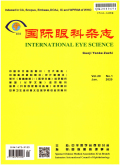于福興實驗室研究計劃
基本信息来源于合作网站,原文需代理用户跳转至来源网站获取
摘要:
1 Molecular regulation of corneal wound healing Rapid healing of the corneal epithelium in response to injury is essential for maintenance of its barrier function. The long-term goal of this project is to obtain basic information about the molecular and cell biology of corneal wound healing. The project will test the hypotheses that amyloid β/A4 precursor-like protein controls serine proteinase activity, mediates cell adhesion, and promotes cell migration during corneal reepithelialization. This study should provide the basis to begin constructing a detailed nap of the molecular pathways and interconnecting networks of proteins functioning in wound repair and to develop therapeutics for treatment of corneal diseases like recurrent erosions and persistent defects of the epithelium.2 Developing an ex vivo model for ocular irritation testThe objective of this project is to develop an ex vivo assay system to predict ocular irritation potential of test chemicals and consumer products. Our hypothesis has been that activation of these transcription factors and disruption of corneal integrity can be used as endpoints/ markers for evaluating ocular toxicity in organ culture. Our goal is to develop a sensitive, efficient, economical and reliable ex vivo model for predicting irritation potential of a chemical or consumer product with mechanistic basis.3 Modulation of epithelial barrier function during corneal infectionThe long-term goal of this project is to understand the mechanisms underlying the induction of the inflammatory reaction and breakdown of the epithelial barrier in the cornea upon infection. We will test the hypothesis that in the cornea TLRs confer responsiveness of HCE cells to pathogens, and PA challenge-induced TLR signaling, through activation of NF-?B and/ or mitogen-activated protein kinase (MAPK), contributes to infection-induced epithelial barrier breakdown. The following studies will be carried out. An understanding of how TLRs transmit signals that lead to epithelial response, including modulation of barrier function,may allow the development of therapeutic agents that prevent breakdown or enhance recovery of barrier function during infection and, as an adjuvant therapy, eliminate the corneal scarring and vision loss associated with bacterial keratitis.4 Developing an adjuvant therapy to reduce inflammatory response induced by bacterial infection of the cornea (bacterial keratitis).

推荐文章
兔視網膜色素上皮细胞移植的實驗研究
兔
RPE细胞
視網膜下間隙
移植
明清家具匠师劃线的工艺原则及措施
明清家具
匠师
劃线
工艺原则
工艺措施
重組葡激酶治療實驗性視網膜中央静脈阻塞
重組葡激酶
尿激酶
視網膜静脈阻塞
光化學法
物流配送的動態服務區域規劃系統架構
动态服務區域
RFID
GPS
電子看板
集结点
内容分析
关键词云
关键词热度
相关文献总数
(/次)
(/年)
引文网络
引文网络
二级参考文献 (0)
共引文献 (0)
参考文献 (0)
节点文献
引证文献 (0)
同被引文献 (0)
二级引证文献 (0)
2001(0)
- 参考文献(0)
- 二级参考文献(0)
- 引证文献(0)
- 二级引证文献(0)
引文网络交叉学科
相关学者/机构
期刊影响力
国际眼科杂志
主办单位:
中华医学会西安分会
出版周期:
月刊
ISSN:
1672-5123
CN:
61-1419/R
开本:
大16开
出版地:
西安友谊东路269号
邮发代号:
52-239
创刊时间:
2000
语种:
chi
出版文献量(篇)
13355
总下载数(次)
19
总被引数(次)
62272
期刊文献
相关文献
推荐文献

 免费查重
免费查重










